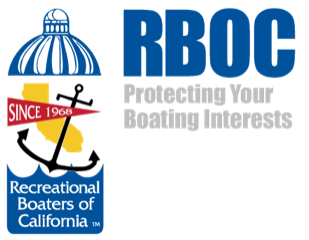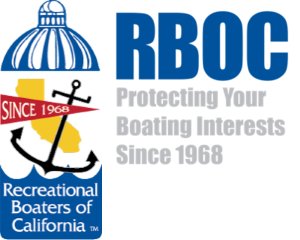RBOC President Cleve Hardaker has submitted the organization’s formal comments to the California Coastal Commission, urging the Commission to modify the East San Pedro Bay Habitat Enhancement to minimize the potential danger presented by placing kelp forest in the vicinity of a busy recreational harbor approach.
RBOC’s formal comments follow below. To take action: click here
Dear California Coastal Commissioners,
Recreational Boaters of California (RBOC) is the nonprofit advocacy organization that works to protect and enhance the interests of the state’s recreational boaters before the legislative and executive branches of state and local government.
RBOC is in its 52nd year as a statewide organization promoting the enjoyment, protection, and responsible use of our waterways.
While RBOC supports the concept of the USACE East San Pedro Bay Habitat Enhancement some of its elements cause serious misgivings.
Specifically, the construction of kelp beds close to the Alamitos Bay entrance channel.
Kelp beds outside the Long Beach breakwater seem entirely appropriate and we envision minimal negative results from such construction.
Kelp beds constructed in the vicinity of the very busy Alamitos Bay entrance will present serious hazards to the many recreational boaters and fishermen coming and going at all times of the day.
Alamitos Bay is home to a large number of boats that come and go regularly.
However, many boaters and fishermen from all up and down the coast frequently enter the harbor and are likely to refer to Navigation Charts for guidance since they may not be familiar with those waters.
Current navigation Charts of Long Beach Harbor do not show any kelp beds in the area.
Navigation Charts always show kelp beds where they occur and identify them as a danger for mariners.
'the potential exists for recreational boaters who traverse over kelp forests to get their propeller blades caught in the kelp at the ocean surface'
The risk described here minimizes the degree of danger presented to boats under power.
Kelp consists of long, strong strands that can easily become wrapped in a boats propeller and can even cause engines to stall, rendering the boat disabled.
In extreme situations, thick kelp can become tightly wrapped around a propeller shaft and pull the shaft away from the transmission leaving a large hole in the hull to allow water ingress.
The proposal mentions that:
‘Kelp bed placement would be localized in clusters identifiable to boaters.
Pathways for boats to avoid kelp ... have been included in the design to ensure boaters have adequate open water space.'
While it is possible that local mariners may become familiar with the location of kelp beds in the area of a harbor entrance and avoid them, visiting sailors and fishermen will have no way to know where these hazards are located.
Kelp forest is not static. It grows and spreads, often in unpredictable directions.
And even local boaters may be arriving or leaving the harbor in hours of darkness or in heavy fog that is not an uncommon occurrence. It would not be easy to identify kelp beds in such conditions. Stormy weather that drives sailors to seek refuge in a safe harbor also make it impossible to identify kelp forests and the peril of a stalled engine while approaching a rocky breakwater is extreme.
RBOC, therefore, urges the Commission to review this proposal carefully and consider modifying it to minimize the potential danger presented by placing kelp forest in the vicinity of a busy recreational harbor approach.
To illustrate the significance of harbor approaches, I have copied the directions for mariners entering the harbor:
The Alamitos Bay entrance is marked by two stone jetties which enter the bay in a NNE direction.
On the Western jetty Is a 25 foot, 6 second green flashing light, also with a foghorn.
The entrance is located approximately 030 degrees magnetic at 1.1 5 miles from the East end of the Long Beach Breakwater; and approximately 285 degrees magnetic at 1.1 miles from the Anaheim Bay (Huntington Harbor) channel entrance.
Take care when entering Alamitos Bay that you identify both stone jetties.
One to port and one to starboard. The San Gabriel River sits directly on the Southeast side of the Eastern jetty. It becomes extremely shallow quickly, and its bottom is dotted with wrecks and rocky shoals.
Therefore, enter Alamitos Bay only when you can identify jetties within 100 yards on both sides of your boat.
The Alamitos Bay Channel is marked with a series of centerline buoys.
Stay to starboard of this row when traveling in either direction.
Also be aware that a silt pumping barge sometimes sits in the channel to clear out shoal areas. It is well marked with round yellow cans.
Stay more then 20 feet from these cans, as they are usually attached to The dredging hose hanging below the surface.
The speed limit throughout Alamitos Bay , including the entrance channel, is 5 m.p.h., strictly enforced by the Long Beach Marine Bureau patrol boats.
Cleve Hardaker, President RBOC









